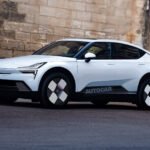Tesla is facing a setback as they are being forced to remove 64 Superchargers at stations along the New Jersey Turnpike. The local authorities have decided to go with another provider, Applegreen, which already operates in all service areas on the turnpike. This decision has led to Tesla CEO Elon Musk accusing the authorities of corruption without providing any evidence.
The New Jersey Turnpike is a crucial system of controlled-access toll roads that spans a 100-mile section of important New Jersey highways. In 2020, Tesla signed an agreement with the New Jersey Turnpike Authority (NJTA) to build 64 Supercharger stalls at 8 stations along the turnpike. However, the agreement has now expired, and the authority has chosen to give an exclusive agreement to Applegreen.
In response to this situation, Tesla issued a statement expressing their disappointment with the decision. They mentioned that they have been preparing for this potential outcome by building 116 stalls off the New Jersey Turnpike over the last three years. This move ensures that there will be no interruption for their customers, as the replacement Superchargers are already in place.
Elon Musk went a step further and called the decision “corruption,” although no evidence was provided to support this claim. The automaker’s agreement with NJTA expired, leading to the authority opting for a sole provider in Applegreen. The new provider will reportedly deploy chargers at all 21 turnpike service stops.
While Tesla has prepared for the removal of their Superchargers by establishing replacement stations off the turnpike, there are concerns about the decision-making process of the Turnpike Authority. The authorities’ choice to go with a different provider raises questions about the fairness of the selection process.
Despite the ongoing dispute, it is essential to prioritize the convenience and accessibility of charging stations for electric vehicle owners. More chargers are better than fewer chargers, and it is crucial to ensure that EV drivers have easy access to charging infrastructure. Ultimately, the focus should be on providing a seamless charging experience for all electric vehicle users.







